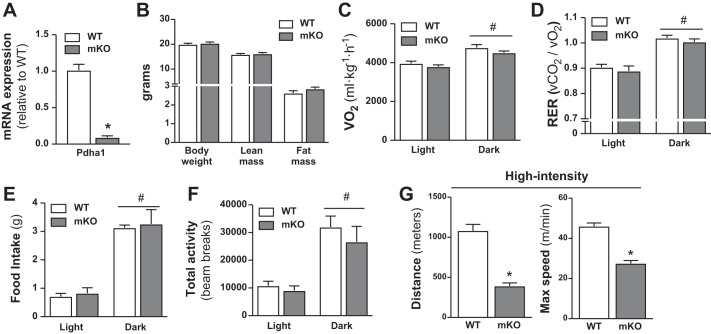Fig. 7.
Unchanged whole-body energy expenditure but reduced exercise performance in female PDHmKO mice. Transcript abundance in gastrocnemius (GA) muscle from female PDHmKO and WT mice (n = 5/5) (A). Body weight, lean mass, and fat mass in female WT and PDHmKO mice (n = 6/7) (B). Whole-body oxygen consumption (V̇o2) (C), respiratory exchange ratio (RER; V̇co2/V̇o2) (D), food intake (E), and total activity counts (beam breaks) (F) during light and dark phases recorded over 48 h in female WT and PDHmKO mice (n = 6/6). Total distance run and maximal speed reached during high-intensity exercise (+1 m/min every 1 min) in female PDHmKO and WT mice (n = 6/6) (G). Data reported as means ± SE Student’s t-test, *P < 0.05, PDHmKO compared with WT (A–B, G); 2-way ANOVA, #P < 0.05, main effect of time (C–F). PDHmKO, tamoxifen-inducible Pdha1 knockout mice; V̇co2, carbon dioxide production; WT, wild-type.

